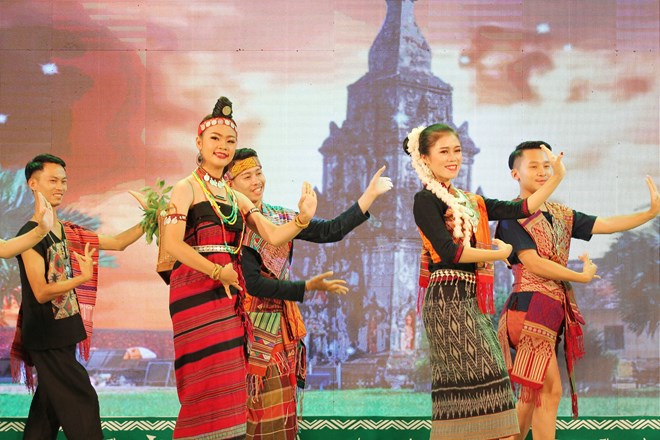
A culture, sports and tourism festival of ethnic minority groups in Vietnamese and Lao border localities is taking place in A Luoi district, Thua Thien-Hue province.
The event attracts more than
600 artisans, artists, and amateur athletes from both sides. They come from
Vietnam’s central and Central Highlands provinces of Thua Thien-Hue, Quang Tri,
Quang Nam, Quang Ngai, and Kon Tum, and the Lao provinces of Attapeu, Sekong,
Savannakhet, and Salavan.
Opening the festival on May 17th, Vietnamese Deputy Minister
of Culture, Sports and Tourism Trinh Thi Thuy said the event aims to honour and
introduce the special cultural values of ethnic minorities while enhancing the
solidarity, friendship, cooperation and cultural exchange between the two
countries’ border provinces.
Deputy Minister of Information, Culture and Tourism of Laos
Buangan Xaphuvong said the great friendship, special solidarity and
comprehensive cooperation of the two countries are hard to be found anywhere
else in the world. This festival will help reinforce cultural exchanges between
Laos and Vietnam, as well as relations between the two peoples in general.
Activities in the festival include exhibitions of the
localities’ culture and tourism products, arts performances, shows of
traditional costumes and brocade making, reenactment of traditional festivals
and customs, and a culinary competition. The programme also features
traditional sports of local ethnics such as pole pushing, tug of war, and
crossbow shooting.
Source: DCS
Hoa Binh province has carried out multiple programmes and initiatives to revive its cultural heritage which has gradually fallen into oblivion through the ebbs and flows of history.
The most prominent and defining feature in the prehistoric era of Hoa Binh is the Hoa Binh Culture. The Culture was first discovered in Hoa Binh. The significant prehistoric culture represents not only Vietnam but also Southeast Asia and southern China. Through excavations of cave sites in the limestone regions of Hoa Binh, French archaeologist M. Colani introduced the world to a "Stone Age in Hoa Binh province – Northern Vietnam" in 1927. On January 30, 1932, the First Congress of Far Eastern Prehistorians, held in Hanoi, officially recognised the Hoa Binh Culture.
Known as the "Land of Epic History”, Hoa Binh province, the gateway to Vietnam’s northwest, boasts a strategic location and a unique cultural tapestry woven by its ethnic minority communities.
The People's Committee of Luong Son District recently held a ceremony to receive the certificate recognizing Sau Communal House in Thanh Cao Commune as a provincial-level historical and cultural site.
Recognising the importance of cultural heritage preservation in protecting and promoting the value system of Vietnamese culture, and serving socio-economic development in the new period, Party committees and local administrations in Hoa Binh province have identified it as a key task in the cultural development strategy. The province has been making efforts in mobilising resources, creating consensus among people and engaging ethnic communities in preserving and promoting cultural identity.
Hoa Binh province has captured growing attention both domestically and internationally for its distinctive cultural heritage and rich history. Most notably, it has been renowned for its famous Hoa Binh culture, considered the cradle of ancient Vietnamese civilisation. Looking ahead to significant milestones in 2025 and the 140th anniversary of province establishment in 2026, Hoa Binh Newspaper presents a comprehensive overview of the province's development across economic, social, cultural, tourism, and security domains.


